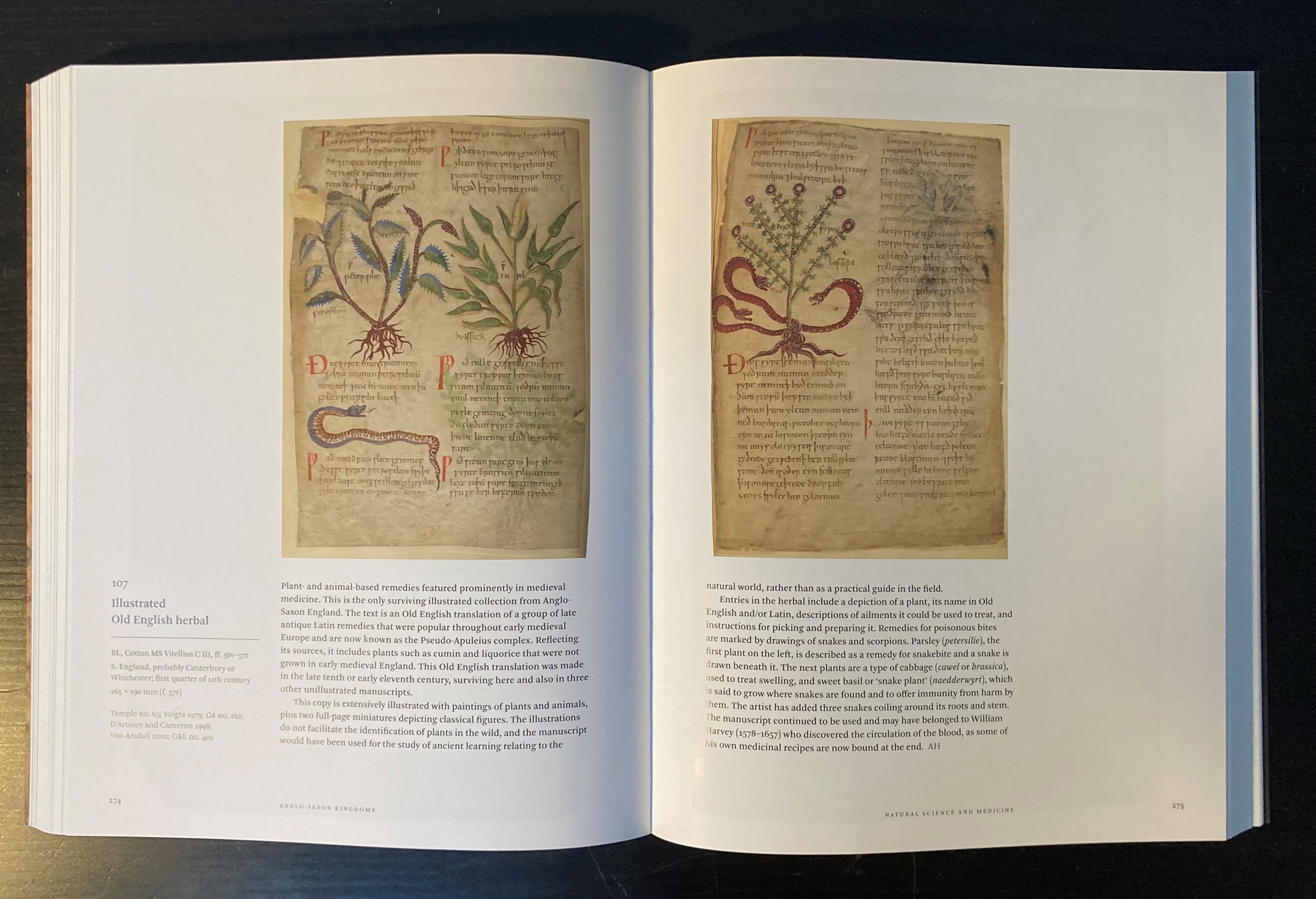Cotton MS Vitellius C III: (1) Old English Illustrated Herbal and Medicina de quadrupedibus in Old English; (2) Peter of Poitiers, Compendium in Genealogia Christi; (3) Macrobius, Saturnalia, books i–ii; (4) notes by William Harvey
About this Object
This manuscript contains four separate items, bound together for Sir Robert Cotton (d. 1631): f. 1: Cottonian frontispiece. f. 3r: early modern endleaf.f. 4r: early modern table of contents. ff. 5r-10v: Peter of Poitiers, Compendium in Genealogia Christi, copied in England in the 1st quarter of the 13th century. ff. 11r-85v: illustrated Old English herbal, with an Old English translation of Medicina de quadrupedibus (ff. 75r-82v), copied in England in the early 11th century. ff. 86r-138v: Macrobius, Saturnalia, books i-ii, copied in northern France in the 3rd quarter of the 9th century. ff. 139r-141v: medical recipes copied in the 1st half of the 17th century by William Harvey, the physician who discovered the circulation of blood. The leaves formerly numbered Cotton MS Vitellius C III, ff. 2r-v and ff. 142r-v are cuttings from a Psalter made in England between 1350 and 1360. They were removed in December 1912 and rebound as Royal MS 13 D I/1, f. 22 (formerly Cotton MS Vitellius C III, f. 142) and f. 25 (formerly Cotton MS Vitellius C III, f. 2). To see the record for this specimen on the British Library website, please click here.
Connection to last week's item: Just as the specimen from the RBGE has data associated with it about its collection and location, this manuscript contains drawings of plants which are connected to their associated data, principally their characteristics, medicinal use, and properties.
Viewer
Further Resources
This object was featured in the British Library's blockbuster exhibition, Anglo-Saxon Kingdoms: Art, Word, War in 2018. The associated catalogue entry can be viewed in the image below 
This manuscript was also featured on the British Library's medieval manuscripts blog; to read the entry, please click here.